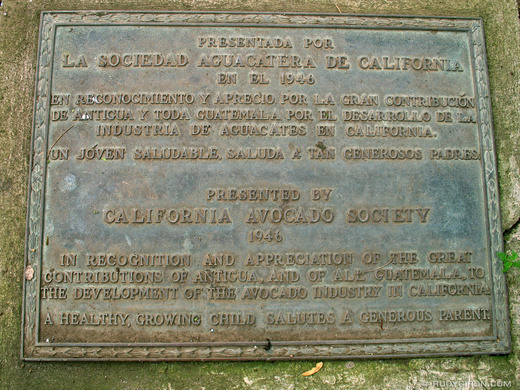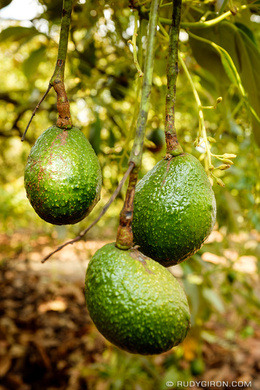Believe it or not, the now-ubiquitous California avocado originated in Guatemala.
In 1946, the California Avocado Society presented a plaque to the city of Antigua Guatemala. The gift was a gesture of gratitude for the ancient city’s role in the creation of the avocado industry that flourishes in California today, which would likely not exist without the seedlings that made their way north from Guatemala.
The creamy fruit was first introduced in the United States from Mexico in the 1870s, and become such a commercial success there was a rush to find more varieties that could be cultivated. The newly formed California Avocado Association sent plant explorer Wilson Popenoe to Guatemala to study and bring back seeds and samples.
Popenoe spent a year in the Central American country and discovered, as he wrote in the association’s annual report, that Antigua was “the most important (avocado growing) region in all Guatemala, if not one of the most important in the world.” He carried a few of these varieties back home and some, like the Lyon and Nimlioh avocado, are still cultivated. Popenoe continued his avocado mission and later went on to become the chief agronomist of the United Fruit Company.
According to most reports, the Hass avocado—the most popular commercial variety in the world today—also stems from Guatemalan seedlings, possibly the Lyon variety. The seeds found their way into the hands of a green-thumbed mailman named Rudolph Hass living in La Habra Heights, California. Quite by accident, Hass discovered they grew into a tree that bore a rough, dark-skinned variety of the fruit. These little avos were uglier, sure, but also creamier and tastier than the common Fuerte variety of the time, which had been introduced by Popenoe. Hass became the first American to patent a tree, and the avocados he named after himself spread across the world. By 1990, the Hass avocados accounted for more than 80 percent of California’s avocado production.
This culinary contribution is marked by a humble plaque, which can be found today on the main square of Antigua. It reads, in both Spanish and English, “In recognition and appreciation of the great contributions of Antigua and of all of Guatemala, to the development of the avocado industry of California.” A line at the end adds, oh so sweetly, “A healthy child salutes a generous parent.”
Know Before You Go
From the cathedral on the main square, walk towards the fountain of the mermaids, after the first garden area, walk towards your left and the plaque should be in the middle the garden area facing the fountain.















Đăng nhận xét